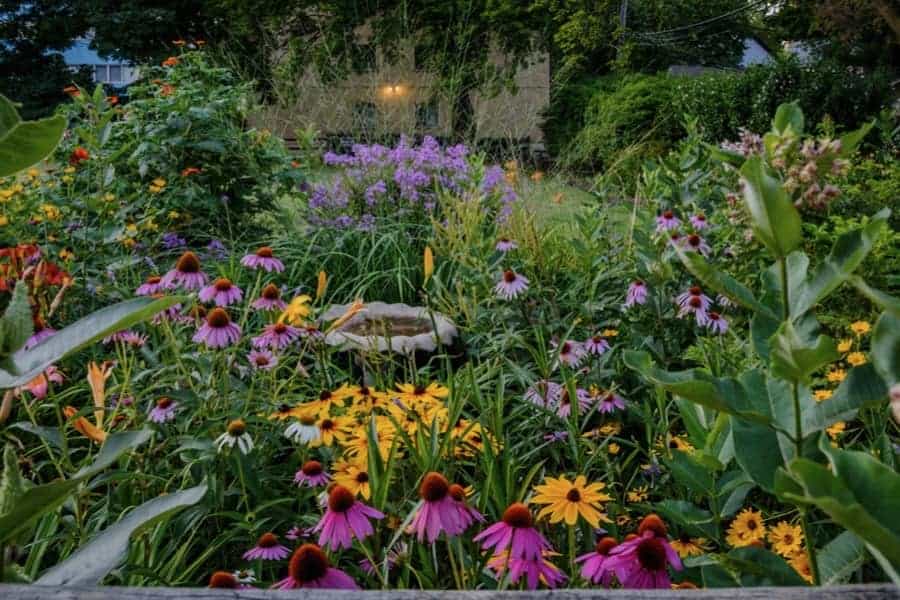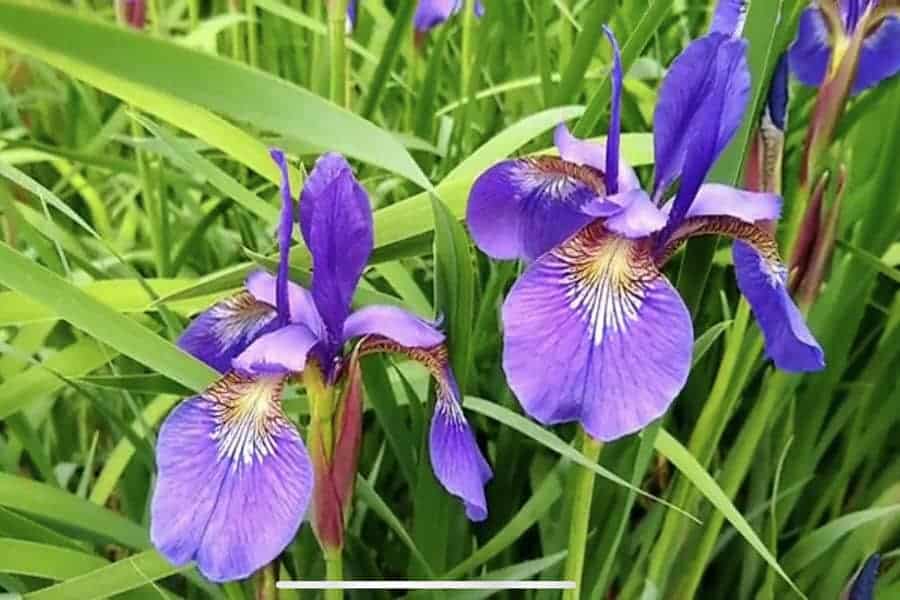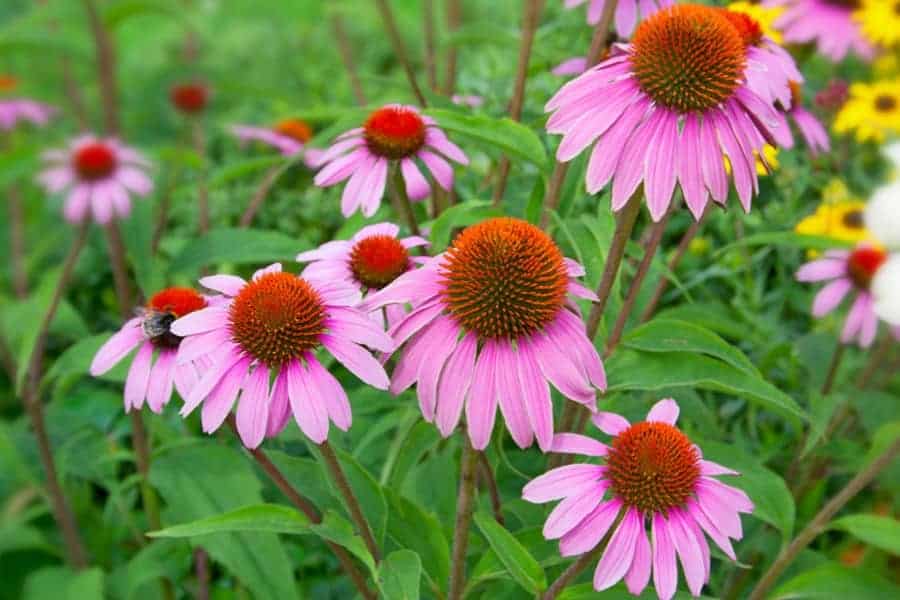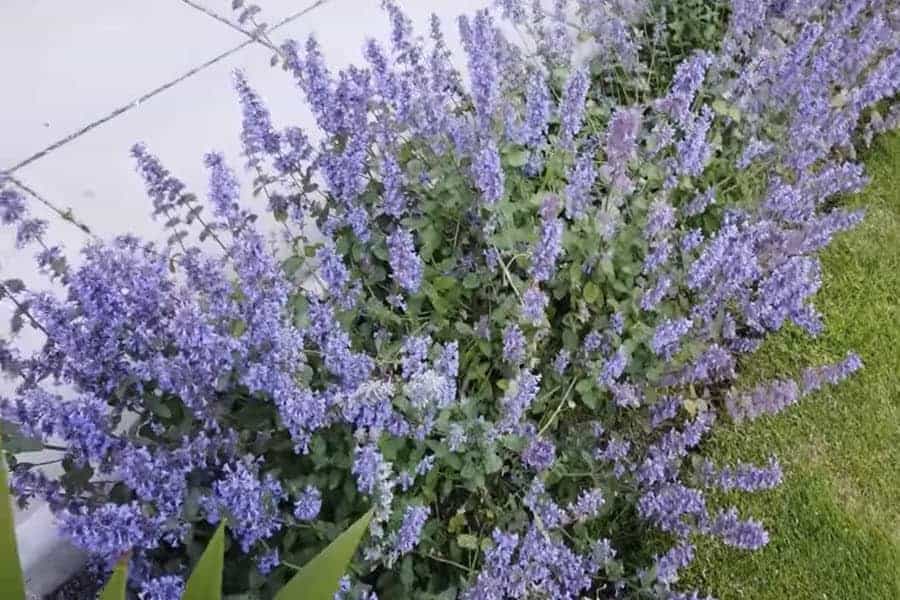
Cold-tolerant perennials are undoubtedly a boon for harsh winter conditions. They not only withstand the freezing temperatures but keep your garden blossoming with flowers when other plants seem to be dying off frost damage.
The 5 best hardy perennials you can count on to survive the coldest winters are Sedum, Peony, Siberian Iris, Coneflower, and Catmint.
Keep reading if you want to know more about these cold perennials, such as growing conditions, how to cultivate and take care of them. Moreover, below we have answered if and when it’s required to winter-protect hardy perennials.
5 Best Perennials for Cold Climate
Whether winter is approaching you or the cold has already set in, it’s never too late to plant the following perennials that bloom stunningly in the coldest months of the year.
Sedum

Sedum is a low-maintenance perennial known for its clusters of colorful star-shaped flowers. They are hardy and can withstand frost and freezing temperatures. Sedums are a large genus of flowering plants that falls into two varieties: low-growing sedum (creeping) and upright sedum (tall).
They are best cultivated as a centerpiece or backdrop in a garden. Sedums are ideal for both hot summers and cold winters. Moreover, it’s a deer-resistance and drought-tolerant perennial to cultivate.
Growing Conditions:
- Sedums don’t need deadheading and are easy to take care of. You can leave them unattended when preparing and pruning your garden for winter.
- Best suited for climates that are not overly wet or humid.
- Sedums are highly adaptable and tolerant to varying soil conditions. However, a sandy and well-drained soil type suit them well.
Size:
- Sedums can grow 6–24 inches tall and 12–24 inches wide, making them ideal for an accent or focal plant.
Hardiness Zones: USDA 3-11
If you don’t know what your hardiness zones are, click here to find out.
Best Sedum Varieties:
Sedum has several hundred varieties to choose from. Some of the popular species include Dynomite, Autumn Joy, Brilliant, Vera Jamison, Soft Cloud, and Black Jack.
Peony

How can you not include the garden classics Peonies when discussing the best perennials for cold winters? Contrary to popular belief, peonies aren’t difficult to grow.
They come in a wide variety of flower forms and bright colors. The best thing: Peonies are incredibly hardy, carefree, and long-lived perennials. They can survive the harshest of winter conditions with little to no maintenance.
Growing Conditions:
- The best time to plant peonies is in the fall.
- Peonies are sun lovers. Plant them in spots that aren’t overshadowed by tall trees or thick shrubs.
- A fertile, moisture-rich, and well-draining soil is best suited for Peonies cultivation.
- The ideal time to prune Peonies is early fall or after the first frost.
- Peonies require regular deadheading, as it helps the perennial maintain its aesthetic appeal and prevent frost damage.
Size:
- Depending on the variety being cultivated, most Peonies grow 3-4 feet tall and 3 feet wide. Ensure there is room for it to grow at its best.
Hardiness Zones: USDA 3-8
Best Peony Varieties:
- Most gardeners prefer choosing Peonies based on the flower shapes. It includes Single, Japanese, Anemone, Semi-Double, Bomb, and Full Double.
- If you are a fan of colorful flowers – Pink, White, Cream, Red, Maroon, Yellow, Orange, and Multi-Colored Peonies are the popular varieties to choose from.
- Herbaceous peonies are the most commonly grown species.
Siberian Iris

If you live in a region where the temperature often goes negative, you can count on Siberian Iris to survive it. After all, it’s a native plant to Northern Turkey and Russia.
Siberian Iris is an early blooming perennial and is available in blue, purple, lilac, yellow, or white flowers. What makes Siberian Iris stand out is the dark green thick clumps and strappy leaves. It’s a hardy perennial that can withstand wind, rain, and cold. Siberian Iris can be mildly toxic to humans and animals, so keep that in mind.
Growing Conditions:
- A fertile, medium moist, and well-drained soil is best suited.
- Siberian Iris is best grown in full sun to partial shade.
- They are ideally planted during spring or late summer.
- Siberian Iris is the longest-lived perennial. Over time the plant’s clumps get woody and die out from the center. Therefore, it’s recommended to divide it in the fall or every few years.
- Prune foliage only after it turns brown.
Size:
- The Siberian Iris generally grows up to 2 to 4 feet tall and 2 to 3 feet wide.
Hardiness Zones: USDA 3-8
Best Siberian Iris Varieties:
The popular species include Caesar’s Brother, Butter and Sugar, Blueberry Fair, Charming Billy, Contrast in Styles, Cape Cod Boys, Snow Queen, and Halcyon Seas.
Coneflower

As the name sound, they are cone-shaped flowers with a prominent center. Coneflowers are easy to grow and bloom for months during the summer and fall. They make great cut flowers and are drought tolerant. Coneflowers are available in a wide range of colors: pink, purple, yellow, orange, red, and white.
Most coneflowers are hardy, except for hybrid species. So when you go out to buy, make sure the label says cold-tolerant.
Growing Conditions:
- Coneflowers flourish in full sun.
- Plant them in dry to medium moist, nutrient-rich, and well-draining soil for favorable results.
- They are pretty tolerant and can adapt to drought, heat, and various soil types.
- Divide clumps when crowded or about every four years.
- Regularly prune your Coneflowers. As it helps in rejuvenation, encourages new growth, increases blooms, and keeps the plant healthy.
Size:
- Coneflower grows up to 5 feet tall and 2 feet wide.
Hardiness Zones:
- Do best in USDA zones 3 to 9.
Popular Coneflower Varieties:
Some of the hardiest coneflower varieties include Sunrise, Harvest moon, Cheyenne Spirit, Green Envy, Razzmatazz, Doubledecker, and Kim’s Knee High.
Catmint

If you are a fan of Lavender’s rich-purple blooms but are disappointed that they aren’t hardy enough to survive harsh winters, go for Catmint. This herbaceous perennial is cold-tolerant, produces blue flower clusters like Lavenders, and has an aromatic smell.
It blooms in spring and summer as soon as it wakes from dormancy. Catmint is a member of the mint family and is easy to grow.
Growing Conditions:
- Catmint is best grown in full sun to part shade and in dry to medium moist, well-drained soil.
- Catmint is not considered an invasive perennial, but it tends to spread wide over time. Therefore, it must be pruned to control the spread.
Size:
- Grows up to 2.5 feet tall and 3 feet wide.
Hardiness Zones: USDA 4-8
Popular Catmint Varieties:
Siberian Catmint, Japanese Catmint, Greek Catmint, and Persian Catmint.
Do Cold Perennials Need to be Protected from Frost?
Winter-hardy perennials are naturally self-equipped with the genes to tolerate frost and don’t necessarily require protection.
However, newly planted or young perennials may get damaged from frost. Protecting them certainly helps the plant to survive more years.
- Covering plants with a frost cover is probably the best winter protection you can offer your perennials.
- Additionally, around 3 to 4 inches of mulch over the root zone reduces exposure to cold weather.
Related Questions
Q. What is the best way to choose perennials for a home garden?
You can decide which perennial to grow based on your soil and weather conditions. Secondarily, give preference to flower shapes, colors and fragments. If you don’t have the time to garden all day, go for low-maintenance perennials.
Q. How much cold is too cold for perennials?
Most cold-tolerant perennials can withstand temperatures below freezing points. They simply remain unbothered.
Q. What is the hardiest perennial flower?
Many perennials are considered to be extremely hardy. However, there is no system to determine one species or variety that is the hardiest of all.
Final Words
When you live in cold regions, growing winter-tolerant perennials becomes your best shot to maintain a flowering garden. You can rest assured that the above perennials will survive the harshest of winters. Now, free yourself from all worries of frost damage and take a sigh of relief.
